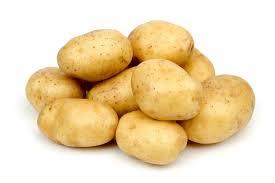I am a potato ~_~
 If you are given a dozen of identical potatoes and 4 boxes, in how many ways can you arrange the potatoes in boxes such that no box is empty ?
If you are given a dozen of identical potatoes and 4 boxes, in how many ways can you arrange the potatoes in boxes such that no box is empty ?
This problem is a part of the set Vegetable combinatorics
The answer is 165.
This section requires Javascript.
You are seeing this because something didn't load right. We suggest you, (a) try
refreshing the page, (b) enabling javascript if it is disabled on your browser and,
finally, (c)
loading the
non-javascript version of this page
. We're sorry about the hassle.
4 solutions
get it by using,the formula:-(n+r-1)C(r-1)_where n=8;r=4
Can you explain what is 'C' in (8+3)C3=165 and why 165?
Log in to reply
nCr ('n' Choose "r") ( r n ) Refer to http://www.mathwords.com/c/combination_formula.htm
We know that there must be at least 1 potato in each box, so we put 1 potato in each box. That leaves us with 8 more potatoes. Then, we use stars and bars to determine that the answer is ( 8 1 1 ) = 8 ! 3 ! 1 1 ! = 3 ⋅ 2 ⋅ 1 1 1 ⋅ 1 0 ⋅ = 1 1 ⋅ 5 ⋅ 3 = 1 6 5 .
This question is badly worded. The answer clearly depends on whether or not the boxes are distinguishable, and this information is not supplied by the problem's text.
The answer supplied (165) and the worked-out solutions provided below assume that the boxes ARE distinguishable.
If the boxes ARE NOT distinguishable, then the problem is moderately harder and requires use of partitions: http://en.wikipedia.org/wiki/Partition (number theory)
Using Balls&Urns, you get a + b + c + d = 12. But balls&urns includes a, b, c, d being 0. So just add 1 to each of a, b,c,d to get a+1+b+1 + c + 1 + d +1 = 12, or that a+b+c+d = 8. Then use the regular balls&urns to get (8+3)C3 = 165.